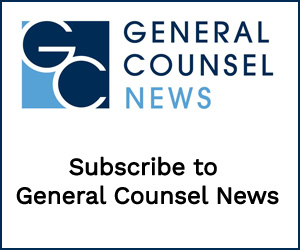Protecting Your Trademark From Counterfeiting
By Stephen Ball and Robert Keeler
Whitmyer IP Group
Clients often ask how they can protect themselves from the sale of counterfeit goods. Counterfeiting is pervasive and has grown “over 10,000 percent in the past two decades.”[1] It is estimated that trade in counterfeit goods is likely to rise to 1.77 trillion dollars in 2015.[2] Increasing use of the Internet, combined with new technologies enabling simple and low-cost duplication, have made counterfeiting easier than ever.
While lost sales are the quintessential harm of counterfeiting, the negative impact can be more widespread. A brand can be tarnished when used on counterfeit goods, and goodwill lost if a customer has a negative experience with a counterfeit product they perceive to be genuine. Counterfeiting can also lead to price deflation for many consumer goods. Innovation can also be stymied, as companies have little incentive to invest in research and development if they will be unable to recoup their investment. Counterfeit products also present dangers to unwary consumers and could incur warranty costs and legal liability due to their defective nature. Additionally, a trademark registration can even be canceled if it is not properly policed.[3]
Counterfeiting can no longer be considered a general cost of doing business. Trademark owners must combat the problem to help restore lost revenue and reputation, as well as preserve and enhance the value of intellectual property and customer good-will. The value of a company’s intellectual property can be a significant asset that appreciates each year with continued investment. Even if only a small percentage of it can be restored or preserved the company benefits significantly.
Counterfeiters commonly use Internet websites as a sales channel because they are easy to set up and provide for wide reach. However, the use of the Internet also provides trademark owners with the opportunity to centrally coordinate monitoring of counterfeiting activities. Monitoring online auctions and webpages are crucial to both the assessment of counterfeit activity as well as identifying and stopping the same. While it is not possible to stop all counterfeiting, focused monitoring and enforcement can maximize value through deterrence.
Prompt action should be taken to stop any counterfeiting activities. Actions can be as simple as filing a DMCA takedown request for online copyright infringement, or can even include the filing of civil lawsuits. In fact, the U.S. Chamber of Commerce Coalition Against Counterfeiting and Piracy suggests taking legal action “[e]ven on small counterfeiting cases, [as] taking action through litigation will demonstrate to counterfeiters that they are at risk no matter what the level of sales activity.”[4] At the same time, it is important to defend trademark registrations through monitoring services, which provide the capability to quickly identify and address any use or potential use of a mark before serious harm occurs.
Today, the largest online marketplaces have policies in place protecting consumers from purchasing counterfeit goods, and encourage shoppers to report suspect listings. Amazon and eBay, two of the world’s largest online retailers, even offer restitution to inadvertent purchasers of counterfeit goods.[5] Alibaba Group, China’s largest Internet commerce company, recently released an English-language version of its TaoProtect software. The TaoProtect software makes it easier for companies to monitor Alibaba’s marketplaces not only for counterfeit goods, but for instances of copyright, patent, and trademark infringement as well.[6] Rightsholders need only submit proof of their intellectual property and identify infringing listings. Alibaba Group then either removes the infringing listings or handles any disputes between the rightsholder and seller. Alibaba Group has thousands of employees and volunteers who help to monitor for counterfeits, including an “anti-counterfeit special operations battalion.”[7]
Marketing and educational advertising campaigns can be used to help educate consumers to identify and refuse to purchase counterfeit goods. It can also be beneficial to takes advantage of partnerships with national and international law enforcement agencies in order to train customs officers and coordinate intelligence. In addition, information can be shared with trade associations, which provide a great way for industry leaders to cooperate discuss anti-counterfeiting strategies for stamping out their illicit competitors.
The overall return on investment on monitoring and enforcement activities is directly proportional to success. In some industries, where losses due to counterfeiting are estimated in the billions, the cost is comparatively trivial, and can be recouped quickly through recaptured sales. A strategy can be tailored to specific needs and a specific budget. And since the costs associated with enforcement remain relatively fixed, return continues to increase with market-share and industry growth. In other words, as sales and goodwill are recaptured, the continued return on investment increases as well.
A successful enforcement program can restore lost revenue and market-share, defend and enhance intellectual property value, protect and enhance customer goodwill and brand reputation, and deter counterfeiters. While each of these factors contributes to improve overall company value, they do so in different ways. For instance, recapturing sales previously lost to counterfeiters directly affects a company’s bottom line, while policing a trademark allows the goodwill and branding built up over years of advertising to remain relevant in consumers’ minds. Compared to the alternative, in which sales dry up while branding becomes irrelevant and worthless, strategic enforcement provides a great tool for those seeking to grow their business.
[1] Real or Fake: A Final Word, INTERNATIONAL ANTICOUNTERFEITING COALITION, http://www.iacc.org/real-or-fake-final-word.html.
[2] International Chamber of Commerce, Business Action to Stop Counterfeiting and Piracy (BASCAP), ESTIMATING THE GLOBAL ECONOMIC AND SOCIAL IMPACTS OF COUNTERFEITING AND PIRACY 50 (2011), available at http://www.iccwbo.org/Data/Documents/Bascap/Global-Impacts-Study—Full-Report/.
[3] See, e.g., 15 U.S.C. 1064; Fact Sheets Protecting a Trademark, INTERNATIONAL TRADEMARK ASSOCIATION, http://www.inta.org/TrademarkBasics/FactSheets/Pages/LossofTrademarkRightsFactSheet.aspx.
[4] U.S. Chamber of Commerce Global Intellectual Property Center Coalition Against Counterfeiting and Piracy, INTELLECTUAL PROPERTY PROTECTION AND ENFORCEMENT MANUAL: A PRACTICAL AND LEGAL GUIDE FOR PROTECTING YOUR INTELLECTUAL PROPERTY RIGHTS 21, available at http://www.theglobalipcenter.com/wp-content/uploads/2013/01/Brand_Enforcement_Manual_FINAL.pdf.
[5] eBay Against Counterfeits, EBAY, http://pages.ebay.com/againstcounterfeits/; eBay Money Back Guarantee, EBAY, http://pages.ebay.com/ebay-money-back-guarantee/; Amazon Anti-Counterfeiting Policy, AMAZON, http://www.amazon.com/gp/help/customer/display.html/ref=hp_left_sib?ie=UTF8&nodeId=201166010; About A-Z Guarantee, AMAZON, http://www.amazon.com/gp/help/customer/display.html/?nodeId=200783670.
[6] Jim Erickson, Alibaba’s Counterfeit Reporting System Gets an Upgrade, ALIZILA (Aug. 6, 2015, 4:35 PM), http://www.alizila.com/alibabas-counterfeit-reporting-system-gets-upgrade-video.
[7] Jim Erickson, The Latest in Alibaba’s War on Counterfeiters, ALIZILA (Jan. 30, 2015, 1:21 PM), http://www.alizila.com/latest-alibabas-war-counterfeits.




